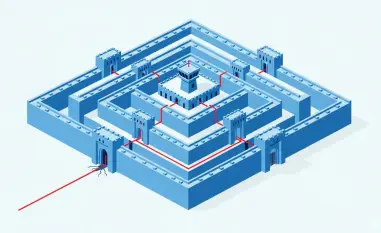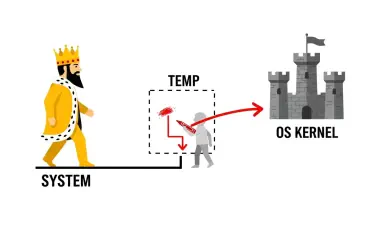In today’s business landscape, cybersecurity has become a critical concern for corporate executives and Wall Street shareholders alike. Chief Information Security Officers (CISOs) are now facing an era where the emphasis on measurable cybersecurity metrics has never been more significant. The demand for concrete data and actionable insights has led to a transformative shift in how cyber risks are managed and mitigated. This article delves into how the Qualys Enterprise TruRisk™ Platform is revolutionizing cyber risk management for CISOs and other cybersecurity leaders, addressing contemporary challenges with innovative solutions.
The Changing Role of CISOs
The importance of measurable cybersecurity metrics cannot be overstated. As Peter Drucker famously said, “If you can’t measure it, you can’t manage it.” This principle is particularly relevant for CISOs, who need concrete data to manage and mitigate cyber risks effectively. A survey by Splunk reveals that nearly 50% of CISOs now report directly to their CEOs, and over 90% regularly brief their Boards of Directors about their organization’s cyber risk exposure. This shift underscores the integration of cybersecurity into core business strategies.
CISOs are now expected to provide detailed, data-driven insights into their organization’s cyber risk posture. This includes not only identifying potential threats but also quantifying the financial impact of these risks. Traditional metrics, such as the number of patches deployed, are no longer sufficient. Boards of Directors want to understand the likelihood and financial implications of cyber attacks, as well as the costs associated with mitigating these risks.
The shift in the CISO role highlights the growing importance of cybersecurity at the highest levels of corporate governance. As cybersecurity becomes more intertwined with business strategy, the ability to measure and communicate risk in financial terms is essential. This ensures that the board can make informed decisions that balance security expenditures against potential risks and impacts.
Challenges in Cyber Risk Management
At recent Qualys Strategic Advisory Board meetings, CISOs identified three primary challenges in cyber risk management: limited asset visibility, siloed tools and teams, and a lack of financial context. These challenges complicate the task of managing cyber risks effectively.
Limited asset visibility is a significant issue. ESG research indicates that organizations spend over 80 hours monthly identifying unknown assets, and 70% of organizations have experienced attacks on these assets. The adoption of cloud technologies and large language models (LLMs) by 2025 will further exacerbate these visibility challenges.
Siloed tools and teams also pose a problem. Enterprises often operate with a fragmented understanding of cyber risk due to the use of multiple, disconnected security tools. The Panaseer Survey shows that organizations use an average of over 70 security tools, making it difficult to consolidate risk signals into a single coherent view.
The lack of financial context is another challenge. CISOs need to communicate cyber risk in terms that resonate with the board. Traditional metrics, such as the number of patches deployed, are no longer sufficient. Instead, boards want to understand the likelihood and financial impact of attacks and the costs of mitigating them. Without this context, it is difficult to prioritize resources effectively and make informed decisions about risk management.
Qualys Enterprise TruRisk™ Platform
To address these challenges, Qualys launched the Enterprise TruRisk™ Platform nearly 18 months ago. This platform provides a unified view of the entire cyber risk posture, enabling efficient aggregation and measurement of risk factors. It facilitates the communication of cyber risk within a business context, going beyond traditional patching to cover all potential cyber risk areas.
The platform’s key features include unmatched asset visibility, rapid vulnerability detection and response, and a comprehensive TruRisk™ score. These features help CISOs manage and mitigate cyber risks more effectively, providing a clear understanding of security postures and aiding in data-driven decision-making.
By providing a holistic view of the cyber risk landscape, the Qualys Enterprise TruRisk™ Platform allows organizations to identify and address vulnerabilities more effectively. This integrated approach helps to break down silos, improve communication, and ensure that all aspects of cyber risk are considered in strategic decision-making.
Unmatched Asset Visibility
The Qualys Enterprise TruRisk™ Platform offers exceptional visibility into asset landscapes, including asset groups, domains, misconfigurations, and software. It integrates seamlessly into Configuration Management Databases (CMDB) for precise and automated asset inventories. Qualys Passive Sensors and external attack surface views enhance asset lifecycle and unauthorized software identification and management, respectively.
This level of visibility is crucial for identifying and managing unknown assets, which are often targeted by cyber attackers. By providing a comprehensive view of the asset landscape, the platform helps organizations reduce the time and effort spent on asset identification and management.
Moreover, enhanced asset visibility enables more accurate risk assessments. With a complete understanding of the assets in their environment, organizations can better prioritize their security efforts. This focus ensures that the most critical vulnerabilities are addressed first, reducing the overall risk to the organization.
Rapid Vulnerability Detection and Response
The platform’s Vulnerability Management Detection and Response (VMDR) tool detects zero-day threats up to six times faster than other tools, with a Six Sigma accuracy rate. Covering over 200,000 vulnerabilities, this tool helps prioritize critical risks and streamline remediation, reducing response times by 40%.
Rapid vulnerability detection and response are essential for minimizing the impact of cyber attacks. By identifying and addressing vulnerabilities quickly, organizations can reduce their exposure to potential threats and improve their overall security posture.
The ability to detect and respond to vulnerabilities in real-time is a significant advantage in the fight against cyber threats. As attackers become more sophisticated and persistent, the need for efficient and accurate vulnerability management has never been greater. The VMDR tool provides organizations with the capabilities they need to stay ahead of potential threats and protect their critical assets.
TruRisk™ Score
The TruRisk™ score is a key feature of the Qualys Enterprise TruRisk™ Platform. It incorporates vulnerabilities, misconfigurations, threats, and business context, such as asset criticality, to generate an actionable risk score. Powered by 25+ threat intelligence feeds and advanced algorithms, this score provides a clear understanding of security postures and aids in data-driven decision-making.
The TruRisk™ score helps CISOs communicate cyber risk in monetary terms, resonating with the board and other stakeholders. By translating technical metrics into business impact metrics, the score fosters a common understanding of cyber risk across the organization.
This actionable risk score enables organizations to prioritize their security efforts based on the potential impact of different threats. By focusing on the most critical risks, organizations can allocate resources more effectively and ensure that their security strategies are aligned with business objectives. This approach helps to build a more resilient and secure environment.
Business-Focused Risk Reduction
The platform integrates patch management, mitigation, and isolation strategies to proactively address vulnerabilities, particularly those identified by the Cybersecurity and Infrastructure Security Agency (CISA). TruRisk™ Eliminate maps vulnerabilities to various actionable responses. When patches aren’t available, it provides alternatives and can isolate assets from the network, reducing the risks of unpatched vulnerabilities.
This business-focused approach to risk reduction ensures that organizations can address vulnerabilities in a way that aligns with their operational priorities. By providing a range of mitigation options, the platform helps to reduce the risk associated with unpatched vulnerabilities and improve overall security posture.
Proactive risk reduction is a key component of an effective cybersecurity strategy. By addressing vulnerabilities before they can be exploited, organizations can significantly reduce their exposure to potential threats. This approach not only improves security but also enhances operational efficiency by minimizing the disruptions caused by cyber attacks.
Conclusion
In today’s business world, cybersecurity is a top priority for corporate executives and Wall Street investors. Chief Information Security Officers (CISOs) are now under immense pressure to provide measurable cybersecurity metrics, making concrete data and actionable insights essential for effective risk management. This shift has reshaped the approach to managing and mitigating cyber risks.
The Qualys Enterprise TruRisk™ Platform emerges as a groundbreaking solution for CISOs and cybersecurity leaders, offering innovative tools to tackle current challenges. Its advanced features provide a comprehensive understanding of cyber risks, enabling better decision-making processes. By leveraging real-time data and actionable intelligence, the Qualys Enterprise TruRisk™ Platform helps organizations stay ahead of potential threats.
Furthermore, this platform caters to the increasing demand for transparency and accountability in cybersecurity. In an era where cyber threats are continually evolving, having a robust risk management system is crucial. The Qualys Enterprise TruRisk™ Platform not only identifies vulnerabilities but also offers practical solutions to address them, ensuring organizations maintain robust security postures. By integrating this platform, companies can enhance their cybersecurity measures, safeguard their assets, and build trust with stakeholders.













